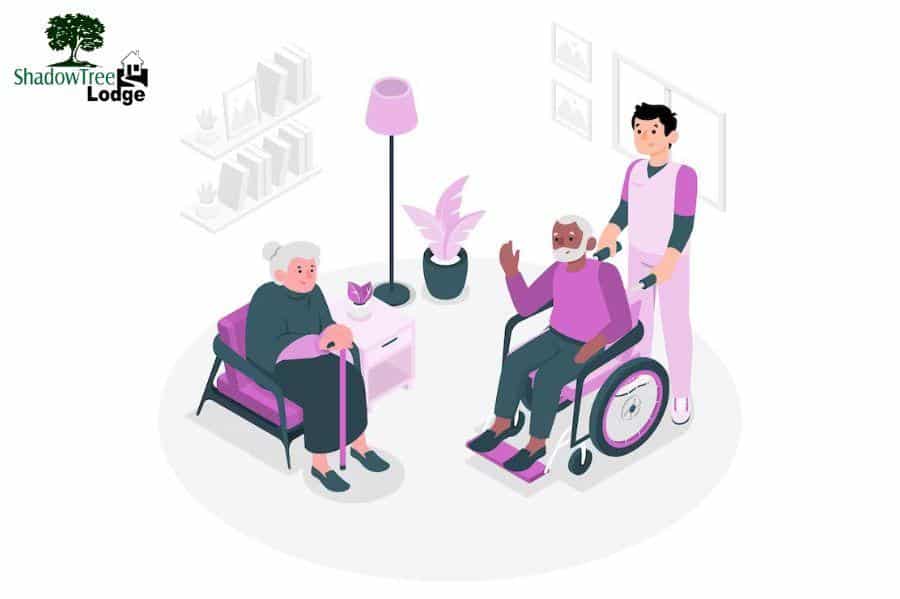Difference Between Independent Living and Assisted Living
Choosing the right senior living arrangement is a significant life decision, and understanding the difference between independent living and assisted living is key to making the right choice. At ShadowTree Lodge, both options are thoughtfully designed to enhance quality of life, yet they offer different levels of support. Independent living is ideal for seniors who enjoy autonomy and a maintenance-free lifestyle, while assisted living provides extra support with daily tasks without sacrificing independence. Knowing when to transition from independent to assisted living, the costs involved, and how each setting operates helps you make informed decisions that match your evolving needs. Let’s explore how these two paths to senior wellness differ and discover which might be the best fit for you or your loved one.
What Is Independent Living Really Like?
ShadowTree Lodge’s independent living empowers residents to embrace a lifestyle filled with freedom, friendship, and fulfillment. Seniors benefit from thoughtfully designed living spaces that minimize upkeep and maximize time for personal enjoyment. Whether it’s yoga in the courtyard or game night with friends, this environment encourages active, social living. Those who meet the requirements for independent living facilities usually don’t need help with daily activities and thrive in a vibrant, communal setting. In this model, seniors maintain control over their day-to-day lives while gaining access to on-site amenities that enhance comfort and engagement. Learn more about how these spaces promote well-being in our article on the benefits of senior living communities.
How Assisted Living Adds Support Without Losing Independence
Assisted living provides the right balance of care and autonomy when daily routines feel overwhelming. At ShadowTree Lodge, this means customized care plans based on each resident’s unique needs. Residents receive help with tasks such as bathing, dressing, and managing their medication—all while living in a private apartment. For many, it’s the natural next step after independent living. The presence of 24/7 trained staff and immediate access to health services offers reassurance and safety. If you’re wondering when to move from independent to assisted living, it often begins with small needs becoming more frequent. Explore the whole picture in our top benefits of assisted living resource.
Cost Considerations: Independent vs Assisted Living
When comparing senior living options, independent living vs assisted living costs are major deciding factors. Independent living usually follows a more predictable model, with monthly rent covering housing, utilities, and amenities. Assisted living, on the other hand, can include added fees depending on the level of care required. These variable costs reflect the additional services, from meal preparation to personal care assistance. It’s important to assess your current and future budget alongside your care needs. Check out our assisted living and nursing home distinctions to understand how pricing aligns with services.
Independence Levels: What Changes Between Living Options?
The difference between independent living and assisted living becomes even clearer when examining how each supports independence. Independent living prioritizes freedom, offering flexible schedules and minimal restrictions. This setting is best for those who can manage their own care but enjoy a structured environment. In contrast, assisted living provides daily support while still honoring autonomy. You’ll find that both options encourage social connection, but it’s the intensity of care services that sets them apart. Residents transitioning from one level to another often find peace of mind knowing that care levels can be adjusted over time.
Support Services: Tailoring Care to Resident Needs
While both living types aim to uplift resident well-being, assisted living offers more comprehensive services. The staff-to-resident ratio in assisted living ensures that residents receive personal attention, particularly when medical or mobility concerns arise. Independent living focuses more on hospitality and leisure than healthcare. This difference plays a crucial role when determining suitability. For families comparing independent living vs assisted living vs nursing home, knowing where their loved one fits helps avoid unnecessary transitions and stress. Learn how ShadowTree integrates wellness and lifestyle in our senior living differences guide.

Making the Right Choice for Your Lifestyle
Determining whether independent or assisted living is right for you depends on your level of independence, support needs, and social preferences. Independent living is ideal if you or your loved one thrives with minimal help and enjoys group activities. But if managing daily tasks becomes stressful, assisted living ensures dignity without isolation. The transition can be gradual, especially in communities like ShadowTree Lodge, where residents can shift between levels of care as needs evolve. This model removes the pressure of choosing only once and allows for a fluid, supportive journey.
Why ShadowTree Lodge Stands Out
At ShadowTree Lodge, each resident’s journey is respected, supported, and celebrated. Whether you’re enjoying independent living or benefiting from assisted services, the community is designed to make every day meaningful. From beautifully landscaped grounds to spacious apartments and robust activity calendars, ShadowTree Lodge fosters comfort and connection. The Christ-centered approach ensures a compassionate environment where each resident’s values are honored. Discover how ShadowTree Lodge can support your next chapter—we invite you to be part of a community where care and independence thrive together.
For more information or to explore your options, call us at 810-660-7525 or schedule a tour.
Frequently Asked Questions
How does assisted living differ from independent living?
Assisted living provides personal care support such as help with bathing, dressing, medication management, and daily tasks, while independent living is designed for seniors who can live independently but want access to social opportunities and maintenance-free living. Assisted living also includes more supervision and medical oversight. Independent living typically focuses on convenience and community rather than care. Both offer private apartments and communal amenities but differ in the level of support provided.
What is one of the biggest drawbacks of assisted living?
One of the main drawbacks of assisted living is the cost, which can be high and may not be covered by insurance or Medicare. This can be challenging for families with limited financial resources. Additionally, some seniors may find it difficult to adjust to a new environment with less independence. It’s essential to weigh the benefits of safety and care against the financial and emotional impacts.
When to move from independent living to assisted living?
A move from independent to assisted living is often considered when a senior needs help with daily activities such as dressing, bathing, or managing medications. Other signs include increased falls, memory issues, or changes in health that make independent living unsafe. Families may also notice a loved one becoming more isolated or struggling with daily tasks, such as meals. Transitioning earlier can ensure seniors receive needed support while still maintaining a good quality of life.
Which is more expensive, independent living or assisted living?
Assisted living is generally more expensive than independent living because it includes personal care services, health monitoring, and more staff support. Independent living usually covers rent, meals, and some amenities but not medical or daily personal care. Prices can vary depending on location and services provided. It’s helpful to compare costs based on individual needs and what’s included in the monthly rate.




